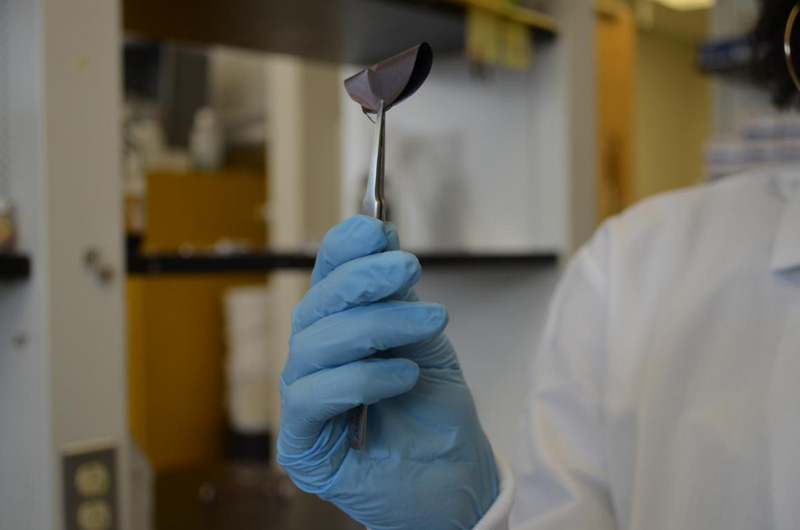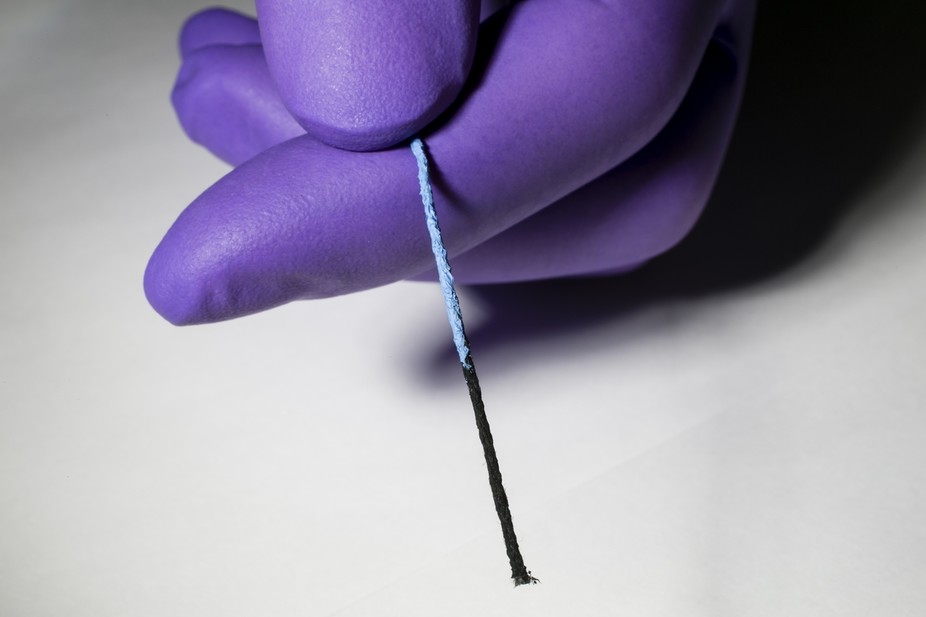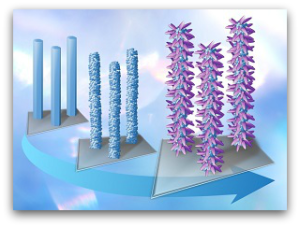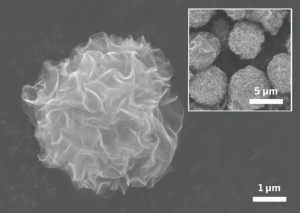
MXene is a nanomaterial that can super effectively block and absorb electromagnetic radiation.
Image: Drexel University
We’ve all experienced electromagnetic interference, whether it’s hearing your car engine break in your AM radio station or the squealing of speakers at a concert when a cellphone gets to close. However, researchers from Drexel University may have found a way to all but stop this interference though what they’re calling MXene (2D Transition Metal Carbides).
Electromagnetic interference isn’t just annoying for users, it’s damaging for devices and could lead to the overall degradation of cellphones, laptops, and other electronics.
Typically, to block this interference, scientists encase the interior of electronics with conductive metal (i.e. metal, copper, or aluminum). But researchers for this new study found that a few-atoms thin titanium carbide may be more effective at blocking such interference. Additionally, it is extremely easy to apply – with the ability to be sprayed on to any surface just like paint.
“With technology advancing so fast, we expect smart devices to have more capabilities and become smaller every day. This means packing more electronic parts in one device and more devices surrounding us,” says ECS Fellow Yury Gogotsi, lead author of the research. “To have all these electronic components working without interfering with each other, we need shields that are thin, light and easy to apply to devices of different shapes and sizes. We believe MXenes are going to be the next generation of shielding materials for portable, flexible and wearable electronics.”
(more…)
 Topic close-up #2
Topic close-up #2


 A nanoparticle that can help clean water of cadmium becomes toxic once taking in the metal. But research finds that organic matter, in this case from algae, reduces that toxicity.
A nanoparticle that can help clean water of cadmium becomes toxic once taking in the metal. But research finds that organic matter, in this case from algae, reduces that toxicity. Scientists have turned wood into an electrical conductor by making its surface graphene.
Scientists have turned wood into an electrical conductor by making its surface graphene.



